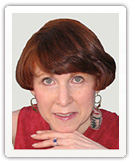Articles: Organizational Effectiveness Archives
10/2009 Dangers Of Lack Of Diversity
In his excellent book, The New Pioneers: The Men and Women Who Are Transforming the Workplace and Marketplace, Thomas Petzinger, Jr. relates the rise and fall and rise again of ASSI (Architectural Support Services Inc.). The company, started in 1985, at first flew sky high by hiring a homogeneous group of architects. A look-alike staff resulted from a rigorous recruiting profile: only hot shot graduates from the best schools. The staff was similar in age, economic background and race.
10/2009 Definitions for Alternative Working Relationships
Outsourcing has become a big business trend in the U.S. as well as a political football when it refers to jobs sent overseas. It is the most common, but only one of the non-traditional working relationships found in today's workplace.
10/2008 What Young Professional Talent Wants
04/2008 Reinvention of the Work Lifecycle: Flex in the Middle
Sometimes the controversial makes a lot of sense. A post a few weeks ago on the Employee Evolution blog, The New Work-Life Balance, by Ryan Healy, a 23 year old relatively newly minted entrepreneur, examines the typical career and work intensity progression and concludes the system seems "a little backwards."
11/2006 The Road To Becoming The Fully Realized Professional
by Phyllis Weiss Haserot
The legal profession is experiencing a renewed interest in professional development at many levels, as we predicted would occur when the situation changed from a buyers' to a sellers' market in the pursuit of talent. Not only are firms and their clients seeing an increase in work with a better economy, but also the change in the demographic picture as the large cohort of baby boomer senior lawyers start to transition out is significantly influencing the demand and requirements for professionals development. More is happening on the training front; however, important gaps between what is being offered and what lawyers need in terms of skill and fulfilling of client needs are still evident.
09/2006 Survey: Senior Executives Seek Work-Life Flexibility
A mid-2006 survey by the Association of Executive Search Consultants (AESC) of 1,311 senior executives globally, mostly age 35-54, found...
02/2005 Tips For Lateral Additions, Transitions And Cultural Change
Harvard Business School Professor Michael Watkins has made the following observations from his studies of newly appointed leaders to corporate organizations. From these, I have extrapolated some observations and tips for partners and practice groups joining professional firms laterally.
10/2004 Flexibility For Senior Professionals
Most of the focus on flexible work arrangements in organizations has been on the younger and mid-level professionals and those with children at home. However, increasingly, the large baby-boomer generation and the "veteran" generation before them desire to ease off while still staying connected to meaningful work for either psychic gratification or economic reasons. Firms need to be thinking about building in flexibility for them as well. There is a solid business case that benefits both the organization and the individuals.

